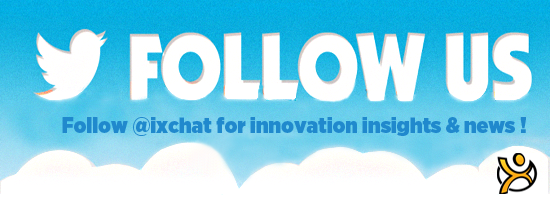Personal Learning Pathways

My mind has been swirling around the significant changes taking place around learning. Not just in the time we have available, suggested recently as 25 minutes per week to stop and learn but in the variety of ways we can learn. Clearly, many of these are digital to construct, so as to apply the more modern design process that works for each of us individually, at our time of need.
I have been struck by the emphasis on personal learning and development. We still get very caught up in the need for scale yet it is the ability and flexibility to design these to our individual pathway that becomes “the order of the dayâ€. The constant struggle is for each of us in simply stopping to focus, finding the time and the last thing you can afford to do, is take an ad-hoc approach to this, it needs a structured design.
Just as an Idea for you? This is where external facilitation might help
As we work through our own learning pathways, it does imply knowing where you are heading or required to head and sometimes that may not be so clear, it needs to be shaped and informed. This needs to have a reasonable understanding of the existing ‘inventory’ of knowledge, experience, learning style preferred and engagement considerations, then it needs setting up in tracking, categorizing and organizing yourself, establishing the methods of knowledge delivery.
This how it is ‘pulled together,’ becomes the crucial part, in its individual parts to mesh into the final ‘whole’ needed. Much of this needs some level of facilitation, some constant conversations, and interactions so all the necessary dots can get connected in a more blended learning environment.
We need to access those who have deep understanding, who can help you think in small chunks of learning, ones who can help move you from the old ‘event’ mentality into this consistency in learning journey, can blend different learning approaches, encourage application and recognize it is not a ‘one size fit all’ world but learning is personal and needs to be authentic and relevant to personal needs. To speed all of these up it needs to be far more collaborative, sharing, discussional opportunities and full of many ‘recognition/ validation’ moments.
Our learning today is moving into two distinct parts.
These are increasingly split into two – the moment of need where you want a quick read, a refresh or enough to take you through that moment to carry you along in understanding and experience gaining, these are called our “micro-learning†points where we quickly consume a post, article or how to go about this. Then we have a lasting need to deepen our knowledge, a dedicated space to truly learn a whole new domain of knowledge that we need to bring into our learning pathway. These are called “macro-learning†needs.
Our past ways of learning, more through formal instruction is just not up to the task today. We are in environments that we all are time-starved, digitally bombarded, socially drowning in as a sea of needed to give our attention immediately and respond. Yet we are still expected to stay fully tuned into our connected world, so as to understand what is rapidly changing in our “breaking world,†one of always being aware to capitalize or respond to it. It is increasingly intensive and challenging. We need to adapt quicker than ever, be more agile and responsive and we require our learning events to reflect this as well.
So working in the innovation space is no different.
We have those “moments of innovating need†and those needs to build rapidly but deeply those “domains of new innovation knowledgeâ€
This requires the evolving power of learning platforms and clear guides to assist your individual learning pathway of innovation understanding need. It does need this set of conversations and interactions. One’s that seeks out what needs to connect and evolve, to accelerate personal performance and contribute to the ‘needs’ of the challenge, growth or task at hand.
Our increasing connectivity, interactivity, and sharing are bringing about a fundamental change in all of what we do.
These shifts need accelerating our learning pathways but in very different ways than how we were taught in the past. I am busy attempting to connect my deep innovation domain content with my “blended†experiences in working in this space for over sixteen years, investigating, researching, applying and consulting on innovation solutions and currently seeking different ways to apply these through coaching, mentoring, facilitating and advising on innovation understanding, at the personal and team level and that needs to be increasingly digital and “bite (and byte) sizedâ€
Wait! Before you go…
Choose how you want the latest innovation content delivered to you:
- Daily — RSS Feed — Email — Twitter — Facebook — Linkedin Today
- Weekly — Email Newsletter — Free Magazine — Linkedin Group
 Paul Hobcraft runs Agility Innovation, an advisory business that stimulates sound innovation practice, researches topics that relate to innovation for the future, as well as aligning innovation to organizations core capabilities. Follow @paul4innovating
Paul Hobcraft runs Agility Innovation, an advisory business that stimulates sound innovation practice, researches topics that relate to innovation for the future, as well as aligning innovation to organizations core capabilities. Follow @paul4innovating
NEVER MISS ANOTHER NEWSLETTER!
LATEST BLOGS
Credit Card Shenanigans
It must be great to be in the credit card business in the United States. Demand is relatively inelastic and regulation is lax, so you can charge whatever you want for an interest rate, increase your fees once or twice a year, and make additional money off cash withdrawals and foreign exchange transactions.
Read MoreBuilding an Experience
As people become ever more immune to traditional advertising and marketing, branding will become more important. Branding is all about building an emotional connection with customers. Making the decision to follow a strategy focused on building a brand is not without peril, however, as it means that you will have to choose to not do certain things, like pursue a low price strategy.
Read More- « Previous
- 1
- …
- 4,132
- 4,133
- 4,134




